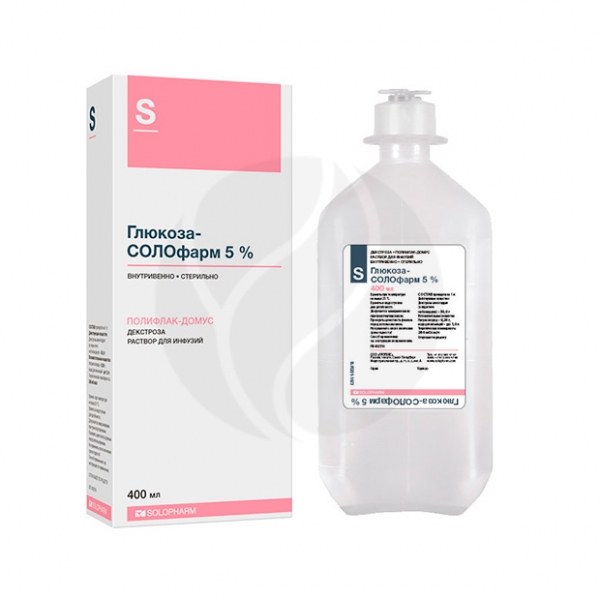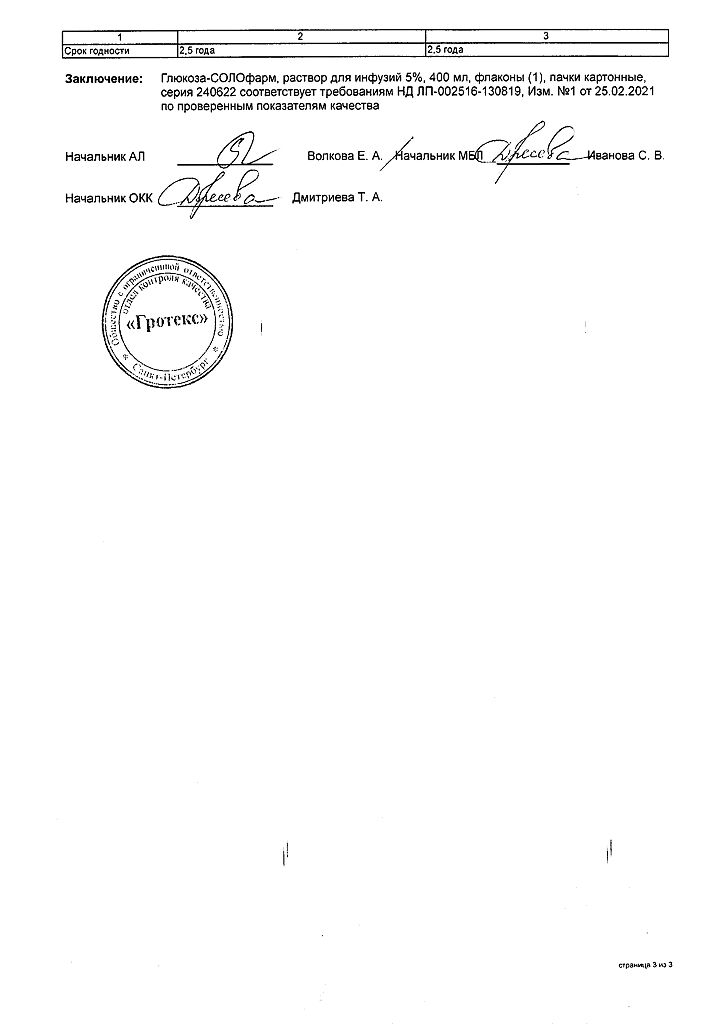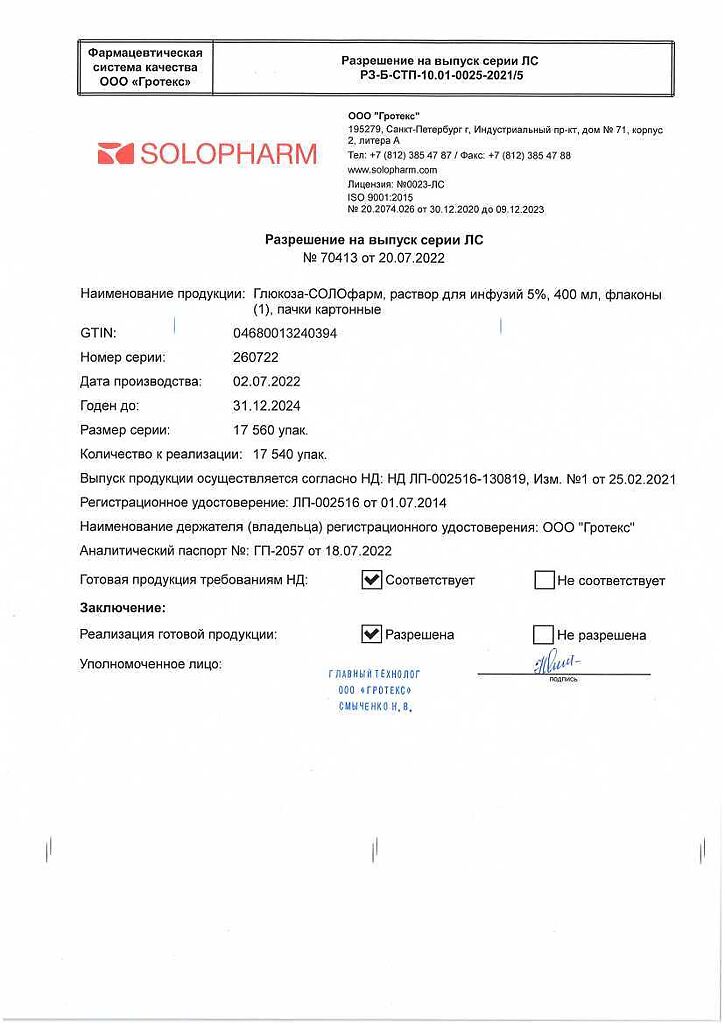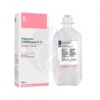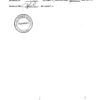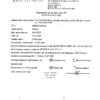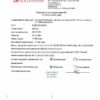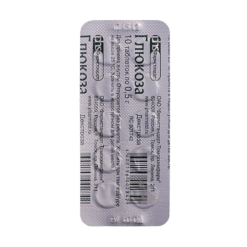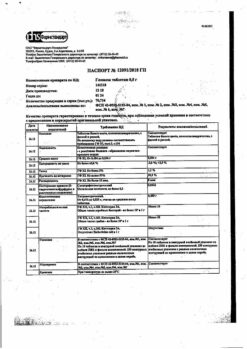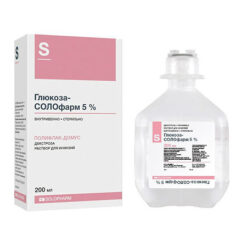No products in the cart.
Glucose-Solofarm Polyflac Domus, 5% 400 ml
€2.00
Out of stock
(E-mail when Stock is available)
Description
Pharmacological action – hydrating, detoxifying.
Pharmacokinetics
Dextrose breaks down into pyruvic acid or lactic acid (anaerobic glycolysis) and is metabolized to carbon dioxide and water with release of energy.
Glucose is completely absorbed by the body, it is not excreted by the kidneys (the appearance in the urine is a pathological sign).
Pharmacodynamics
Glucose increases redox processes in the body, improves antitoxic function of the liver, covers part of the energy expenditure of the body, since it is a source of easily digestible carbohydrates.
Dextrose entering the tissues is phosphorylated converting into glucose-6-phosphate which is actively involved in many parts of the body’s metabolism
The glucose solution 400 mg/ml is hypertonic. When the hypertonic solution is injected into the vein, the osmotic pressure of the blood increases, the contractile activity of the heart muscle increases, blood vessels dilate, the detoxification function of the liver improves, and diuresis increases.
Indications
Indications
– hypoglycemia
– insufficiency of carbohydrate nutrition
Pharmacological effect
Pharmacological effect
Pharmacological action – hydrating, detoxifying.
Pharmacokinetics
Dextrose, breaking down into pyruvic or lactic acid (anaerobic glycolysis), is metabolized to carbon dioxide and water, releasing energy.
Glucose is completely absorbed by the body and is not excreted by the kidneys (appearance in urine is a pathological sign).
Pharmacodynamics
Glucose enhances redox processes in the body, improves the antitoxic function of the liver, and covers part of the body’s energy costs, as it is a source of easily digestible carbohydrates.
Dextrose, entering the tissues, is phosphorylated, turning into glucose-6-phosphate, which is actively involved in many parts of the body’s metabolism.
A glucose solution of 400 mg/ml is hypertonic. When a hypertonic solution is injected into a vein, the osmotic pressure of the blood increases, the contractile activity of the heart muscle increases, blood vessels dilate, the detoxification function of the liver improves, and diuresis increases.
Special instructions
Special instructions
Glucose solution should not be administered quickly or for a long time. If chills occur during the infusion of the solution, the administration should be stopped immediately. To prevent thrombophlebitis, it should be administered slowly through large veins.
For more complete and rapid absorption of dextrose, you can administer 4-5 units of short-acting insulin subcutaneously, at the rate of 1 unit of short-acting insulin per 4-5 g of dextrose.
Patient monitoring should include regular monitoring of blood glucose concentrations, fluid balance, plasma electrolyte concentrations—particularly potassium—and acid-base balance.
It is not recommended to prescribe a glucose solution in the acute period of severe traumatic brain injury, in case of acute cerebrovascular accident, since the drug can increase damage to brain structures and worsen the course of the disease (except in the case of correction of hypoglycemia).
In case of hypokalemia, the administration of a glucose solution must be combined with the correction of potassium deficiency (due to the risk of increased hypokalemia).
For hypotonic dehydration, the use of the drug is indicated simultaneously with the administration of hypertonic saline solutions.
For diabetic patients, dextrose is administered under the control of sugar levels in the blood and urine.
In case of renal failure, decompensated heart failure, hyponatremia, special caution is required when prescribing glucose, monitoring of central hemodynamic parameters is necessary.
Use in pediatrics
It is not recommended to use 40% glucose solution in doses of more than 1 ml/kg of body weight in newborns and premature infants, since there is a high risk of developing encephalopathy caused by the administration of a hypertonic solution.
Pregnancy and lactation
Use during breastfeeding, taking into account the excess of the expected benefit for the mother and the potential risk for the child, provided that the electrolyte and fluid balance are controlled and are within physiological limits. It can be used with caution if necessary, in pregnant women with reduced glucose tolerance, under the control of blood glucose levels.
Features of the effect of the drug on the ability to drive a vehicle or potentially dangerous mechanisms.
The drug does not affect the ability to drive vehicles, operate machinery, or engage in potentially hazardous activities that require increased concentration and speed of psychomotor reactions.
Active ingredient
Active ingredient
Dextrose
Composition
Composition
1 ml of solution contains
active substance
dextrose monohydrate in terms of dry matter – 400.0 mg
excipients:
hydrochloric acid 1 M solution to pH 3.0-4.0,
sodium chloride,
water for injections
Contraindications
Contraindications
– increased sensitivity to the drug
– hyperglycemia
– hyperlactic acidemia
– overhydration
– hyperosmolar coma
– cerebral edema
– pulmonary edema
– acute left ventricular failure
– postoperative disorders of glucose utilization
– circulatory disorders threatening cerebral and pulmonary edema
– decompensated diabetes mellitus
With caution:
Decompensated chronic heart failure, chronic renal failure (oligo-, anuria), hyponatremia, diabetes mellitus
Side Effects
Side Effects
– disturbance of ion balance
– hyperglycemia
– acute left ventricular failure
– fever
– hyperglycemic hyperosmolar coma
– water-electrolyte imbalance
– with an increase in the rate of administration – osmotic diuresis with loss of water, electrolytes and the development of hyperosmolar coma
At the injection site, infection develops, sometimes thrombophlebitis
With repeated administration of the solution, disturbances in the functional state of the liver and depletion of the insular apparatus of the pancreas are possible.
Interaction
Interaction
When combined with other drugs, it is necessary to monitor pharmaceutical compatibility, incl. visually.
When used together with sodium chloride solution, it has an additive effect on the osmolarity of the solution.
Due to the fact that glucose is a fairly strong oxidizing agent, it should not be administered in the same syringe with hexamethylenetetramine.
It is not recommended to mix glucose solution in the same syringe with general anesthetics and sleeping pills (their activity decreases), or solutions of alkaloids (their decomposition occurs).
Glucose weakens the effect of analgesics, adrenergic agonists, inactivates streptomycin, and reduces the effectiveness of nystatin.
For better absorption of glucose in normoglycemic conditions, it is advisable to combine the administration of the drug with the prescription of 4-8 units of short-acting insulin.
Overdose
Overdose
Symptoms: hyperglycemia, glycosuria, hyperglycemic hyperosmolar coma, hyperhydration, water-electrolyte imbalance, increased liponeogenesis with increased production of CO2, which leads to a sharp increase in minute tidal volume, and, as a consequence, respiratory rate; fatty infiltration of the liver.
Treatment: stop glucose administration, introduce short-acting insulin, symptomatic therapy.
Recommendations for use
Recommendations for use
It is administered only intravenously, in a stream of 10-50 ml once. The maximum daily dose for adults is 250 ml.
Manufacturer
Manufacturer
Grotex LLC, Russia
Additional information
| Manufacturer | Grotex Ltd, Russia |
|---|---|
| Medication form | solution for infusion |
| Brand | Grotex Ltd |
Other forms…
Related products
Buy Glucose-Solofarm Polyflac Domus, 5% 400 ml with delivery to USA, UK, Europe and over 120 other countries.

